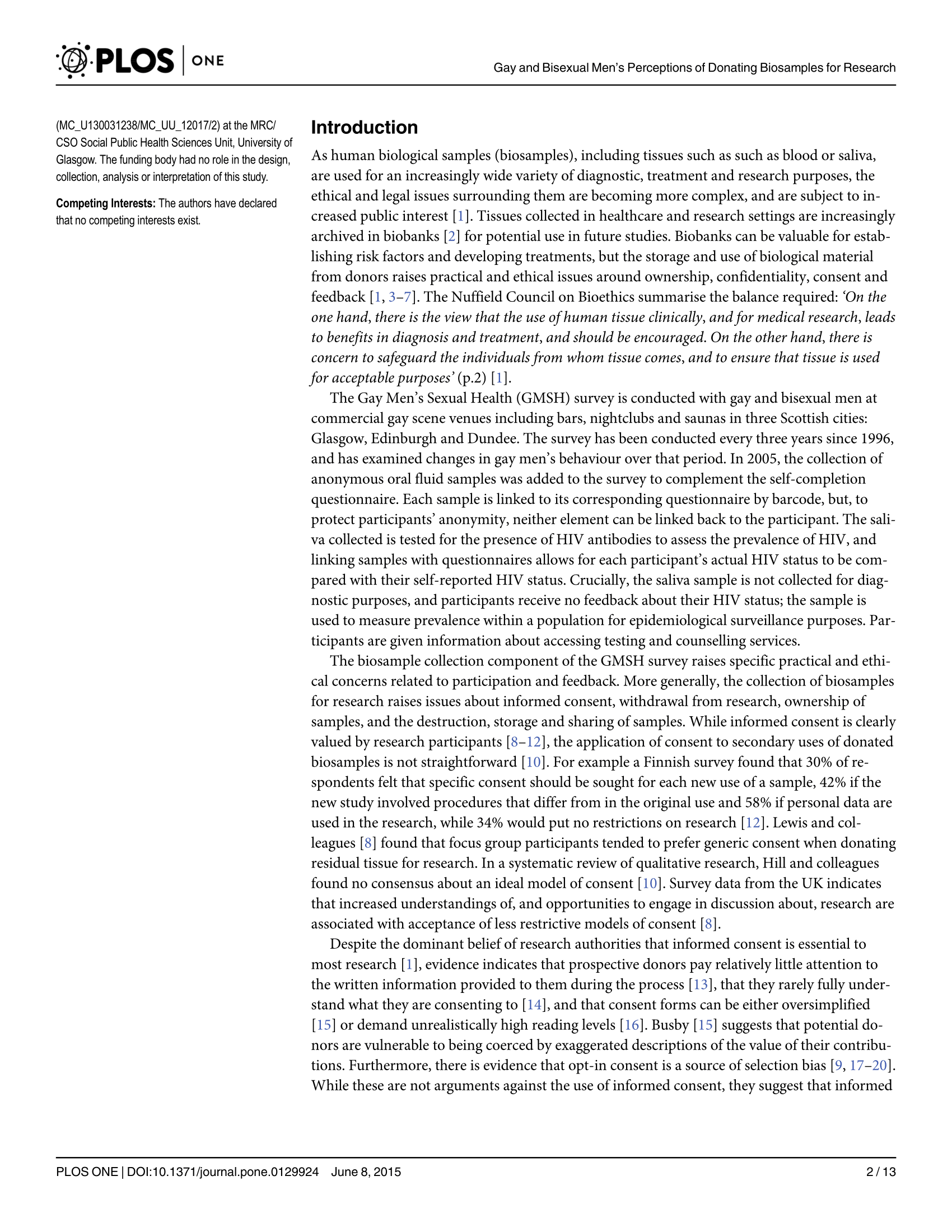How to read a scientific paper
Scientific papers can seem complicated, but they usually follow a similar template. Once you understand that template, scientific papers are easier to understand.
The template used by most scientific journals contains these sections:
- Abstract
- Introduction (also called Background)
- Methods
- Results (also called Findings)
- Discussion
- References
The abstract is a summary of the article. Abstracts can help you quickly understand what a study is about and what the main findings are. A good abstract summarises the background to the research, the methods used, the main results and the conclusions. Abstracts should make sense on their own, without the rest of the article, as abstracts are always available to access for free, while full articles are often only available to paying subscribers. Abstracts can be "unstructured" (written in one long paragraph) or "structured" (broken down into individual section headings).

The introduction introduces the research by presenting the research question(s) or aim(s) and explaining why it is worthwhile. Introductions generally include background information about the topic being studied, and describe other relevant research. Sometimes the introduction section does not have a title.

The methods section describes how the researchers carried out the research. It describes the broad study design (for example whether it is a randomised controlled trial, a case-control study, a survey etc.) and gives detailed descriptions of the relevant features of their specific study (for example how many people were recruited to the study, how were they recruited, how was the questionnaire developed etc.). The researchers must also describe how they measured the outcomes (i.e. in a trial of different diets, the paper might say whether fat loss was measured using a scale, calipers or other method) and how they analysed the data. A good methods section gives the reader enough detail that they could repeat the study themselves in a way that is identical to the original in every relevant way, to see if they produce similar results.

The results section (or findings section) reports the results of the study. For example, if the research involved a large quantitative survey, the results section would include information about how many people completed the survey, basic information describing those people, and statistical analysis of the answers given in the survey. If the method was a small set of qualitative interviews, the findings the authors would report what the interviewees said, using quotations from transcripts to illustrate important findings.

Where appropriate, results are shown in tables, graphs and other figures. If tables or figures are too large, or there are very many of them, they may be included on the journal website instead of the published paper. If you are reading a study on a journal website that you think has extra material available, look for a link for ‘Online Appendix’, ‘Supplementary Data’ or ‘Web Only Data’.The results section is usually for the straightforward reporting of findings, and analysis of the meanings of those findings is often saved for the discussion section.
The discussion is where researchers discuss the meaning of their results. If they listed specific research questions in the introduction, the discussion should report the answers to those questions, or explain why they were unable to answer those questions. Researchers usually discuss the wider importance of their results are, comparing them to relevant evidence from existing research. Researchers often make suggestions about how future research could build on their findings and how relevant groups (for example doctors) might put their evidence to use. In the discussion section, researchers should discuss what, if anything, was unexpected about the findings, and discuss any limitations of the methods that the reader should be aware of. Sometimes the discussion section is followed by a short conclusion section, but often the conclusions are part of the discussion section.

At the end of the paper is the references section, which lists details of the research papers, books, reports and other sources that have been cited in the study, so that readers can find those sources to read for themselves.

Other sections that a research paper might contain include:
- Statement of funding sources – where researchers credit the people or organisations that helped fund the research. This section might be combined with the conflict of interest statement.
- Conflict of interest statement – where researchers declare any relationships (financial or otherwise) they have that could add bias to the research.

- What is known – bullet points listing the key points that are already known about the topic.
- What this study adds – bullet points highlighting how this study adds to existing research on the topic.
- Highlights (or Key findings) – bullet points highlighting the most important messages readers should take from the research.
Once you understand how research papers are structured, it is easier to find the information that you are interested in. For example, if you have seen a headline about a new treatment that might be relevant to you, but you are curious about how similar the people in the study are to you, you can find the paper and read about the sampling strategy in the methods section.
